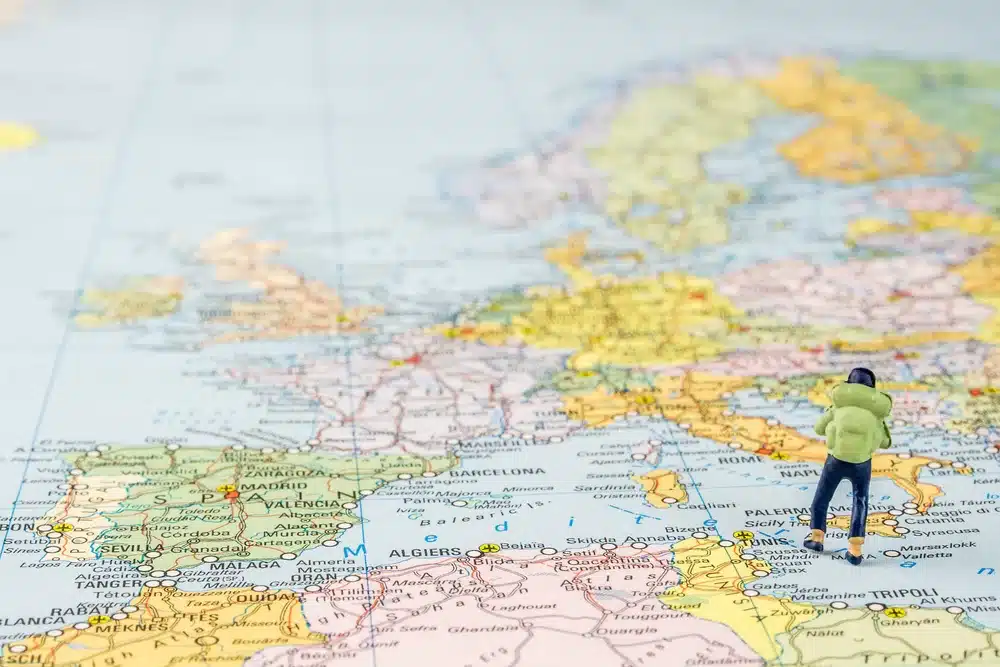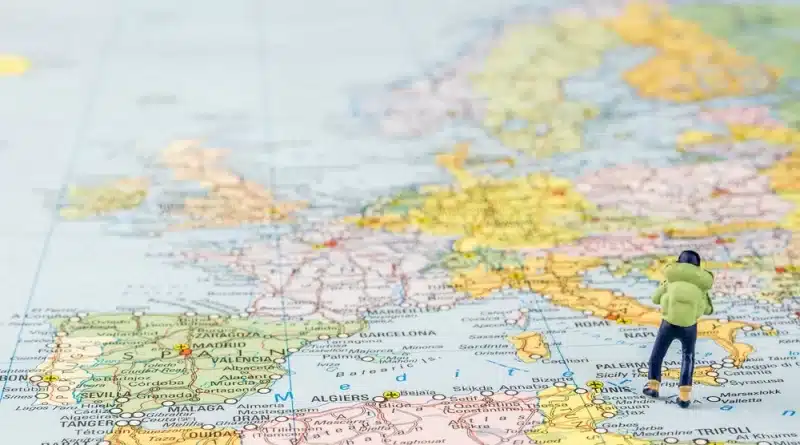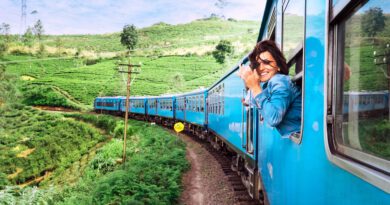
How Slow Travel Eases Chronic Pain, ADHD & Anxiety | Secret Therapy
The world of travel is transforming, with an increasing number of travelers turning away from the shotgun pacing of traditional tourism and embracing a form of travel calling itself slow travel. The nice thing about slow travel is that it can be tailored for individuals with chronic pain, ADHD, and anxiety.
Slow travel redefines the concept of exploration. It promotes a mindful, relaxed approach to travel that prioritizes the quality of experience over the quantity of sights seen.
In this guide, we will demystify the slow travel trend, illustrate its contrast with conventional travel norms, and share essential tips designed to make slow travel a therapeutic and empowering journey for those dealing with chronic pain, ADHD, and anxiety.
Read Also: How to Manage ADHD Symptoms While Traveling
Table of Contents
What is Slow Travel?
Technique
Practical Implementation of Slow Travel
Advantages of Slow Travel for People with Chronic Pain
Advantages of Slow Travel for People with ADHD
Advantages of Slow Travel for People with Anxiety
CONCLUSION

What is Slow Travel?
Slow travel is a mindset and a deliberate style of travel that emphasizes quality over quantity. It encourages education and a deeper connection with the destination, allowing travelers to fully immerse themselves in the local culture, traditions, and way of life. It emphasizes the journey itself rather than the goal of the destination, urging travelers to embrace a slower pace and savor each experience along the way.
Read Also: Best Natural Supplements for Relaxation When Traveling
Origins
The term ‘slow travel’ is actually a derivative of the ‘slow food’ movement. This movement was born in Italy in the 1980s when fast food chains such as McDonalds tried to take over and outdo local businesses. Italy “refused the service.”
The slow food movement emphasizes a connection to the place and values local businesses and high-quality food over cheap mass-produced stuff. In the same vein, slow travel embraces a more personal and cultural approach to traveling.
Impact of Slow Food on Local Chefs and Restaurants
In the past twoish decades, the slow food movement has presented a transformative perspective on dining, one that champions local ingredients, time-honored cooking traditions, and a deep respect for gastronomic culture. Growing up in Portland, Oregon I watched this movement substantially resonate with local chefs and restaurants, turning tiny Portland into one of the world’s great food cities. It has empowered culinary artists to reconnect with their local food heritage, emphasizing the use of locally sourced, seasonal fresh ingredients. This not only allows chefs to create dishes that are fresh, rich in flavor, and sustainable, but also helps support local farmers and producers.
Terroir
The concept of ‘terroir’, deeply ingrained in the slow food movement, underscores the significance of the unique environmental conditions and cultural practices in shaping the character of food and beverages. This principle recognizes how a crop’s taste and quality are intrinsically linked to its geographical origin. The wine industry was among the first to adopt this concept, illustrating how the soil, climate, and topography—collectively the ‘terroir’—of a vineyard imparts distinct characteristics to the wine. Similarly, the coffee industry has embraced ‘terroir’, acknowledging how diverse growing conditions across the world yield an array of coffee flavors and qualities. This reverence for ‘terroir’ has prompted these industries to invest in sustainable farming practices, preserving the natural environment and ensuring the continual production of high-quality, unique products.
Translating the concept of ‘terroir’ into a travel ideal mirrors the ethos of slow travel. Just as ‘terroir’ appreciates the unique character of food and beverages, instilled by its geographical origin, slow travel cherishes the distinct culture, practices, and experiences of a destination. As travelers, we can adopt the ‘terroir’ principle by immersing ourselves in the local environment and understanding its unique rhythm, customs, and narratives. This approach encourages us to appreciate the environmental and cultural nuances that shape the identity of a place, rather than merely ticking off Instagrammable hot spots.

Technique
Moreover, the Slow Food Movement has ushered in a heightened appreciation for the time and skill invested in traditional culinary practices, allowing chefs to showcase their craft in a more profound manner. Diners are encouraged to savor their meals, appreciate the ambiance of the establishment, and indulge in conversations, thereby fostering a more intimate and gratifying dining experience. This shift in dining culture has led restaurants to focus more on providing a holistic, immersive experience.
Just as the Slow Food Movement emphasizes savoring each bite, appreciating the source of ingredients, and enjoying the process of dining, slow travel fosters a similar mindset. It encourages travelers to immerse themselves in the destination, to truly experience and appreciate the local culture, cuisine, and landscape. The ethos of slow travel lies in understanding that the journey is as important as the destination, much like enjoying a meal is not just about the food, but also the ambiance, the company, and the conversation.
Resting
In the rhythm of slow travel, taking time off from sightseeing plays an essential role. It’s not just about providing your body with the rest it needs after the day’s explorations, but also about aligning your physical self with the pace of the location. This restful period, which might seem counterproductive in the context of conventional travel, is a powerful strategy for syncopating your physical self with your environment. You become attuned to the local pace, the ebb and flow of daily life, and the tempo of your surroundings, allowing for a deeper, more authentic connection. This approach not only reduces the stress and fatigue often associated with travel but also enhances your ability to engage with and appreciate the nuances of your destination.
Disconnect to Reconnect: Going Phone-Free
In the realm of slow travel, the practice of leaving your phone in your room serves as an integral strategy to truly immerse yourself in your surroundings. While technology has been a boon for travelers worldwide, it can often act as a barrier, veiling the authentic essence of a location behind the screen of our smartphones.
When we choose to disconnect from our phones, we choose to reconnect with our environment. This practice pushes us to engage directly with the world around us, encouraging meaningful interactions with the locals, appreciating the untouched natural beauty, and understanding the unspoken rhythm of the place.
Moreover, this intentional digital disconnection allows us to be present in the moment, enabling us to experience our travels through all our senses, rather than just through a camera lens. We can become more attuned to the nuances of our surroundings – the sounds, the scents, the textures, and the flavors – enriching our travel experience manifold.
Implementing this practice can be as simple as consciously leaving your phone in your room before you head out to explore. However, it requires discipline and a genuine desire to engage with your environment. It might be tough initially, particularly in moments of idle waiting or when you encounter something you instinctively want to share on social media. But with time, you’ll find that the benefits of being fully present in your travel experiences far outweigh the transient gratification of being constantly connected.
Practical Implementation of Slow Travel
Slow travel can take various forms depending on personal preferences and circumstances. Here are some simple examples of what slow travel can look like:
Choosing the Right Mode of Transportation: Opting for slower modes of transportation such as trains or ships can enhance the overall travel experience. Not only do they allow for more comfortable and spacious seating, but they also provide an opportunity to enjoy scenic views and explore multiple destinations along the way.
Thoughtful Accommodation Selection: Instead of rushing through multiple cities or countries, slow travel encourages staying in one place for a longer duration. Consider renting a vacation home, apartment, or villa to create a home away from home. This allows you to establish a routine, reduce stress, and focus on self-care.
Immersing in Local Culture: Slow travel provides ample opportunities to engage with locals and immerse yourself in the local culture. Interact with residents, attend cultural events, explore local markets, and embrace the local cuisine.

Advantages of Slow Travel for People with Chronic Pain
Slow travel offers a multitude of benefits for individuals with chronic pain. Here are some advantages worth considering:
Reduced Stress: By adopting a slower pace, slow travel minimizes the stress associated with rushing from one place to another. This allows travelers to focus on managing their pain and ensuring their well-being throughout the journey.
More Time for Self-Care: Slow travel provides ample time for self-care activities such as stretching, meditation, or seeking alternative therapies. It allows travelers to prioritize their health and take breaks whenever necessary.
Increased Sense of Control: One of the key benefits of slow travel is the increased sense of control over one’s schedule. This enables individuals with chronic pain to plan rest days or adapt their itinerary to accommodate their needs without feeling rushed or overwhelmed.
Advantages of Slow Travel for People with ADHD
Slow travel can be particularly beneficial for those with ADHD (Attention Deficit Hyperactivity Disorder). Here are some ways in which this unique approach to travel can enhance the experience for individuals with ADHD:
Opportunities for Focus and Engagement
Slow travel allows for in-depth exploration of a single location, catering well to the hyperfocus aspect of ADHD. Spending more time in one place provides ample opportunity to engage fully with the surroundings, people, and unique aspects of local culture.
Relaxing Routine
Establishing a routine can be helpful for managing ADHD symptoms, and slow travel promotes this by encouraging longer stays in one place. Having a “home base” allows for the creation of a daily schedule, which can reduce anxiety and increase a sense of stability during travel.
Reduced Overwhelm
Traditional fast-paced travel can be overwhelming for individuals with ADHD, with numerous new stimuli and frequent changes in the environment. Slow travel minimizes this by focusing on one location at a time, reducing sensory overload and enhancing enjoyment of the travel experience.
Enhanced Flexibility
Slow travel offers flexibility, which is essential for individuals with ADHD. If an activity or location becomes too overwhelming, having the freedom to change plans without a packed itinerary can significantly enhance the travel experience and reduce stress.
Time for Self-Care
Slow travel also provides ample time for self-care activities, which are crucial for managing ADHD symptoms. This includes time for rest, exercise, meditation, or even simply unwinding with a book – all of which can contribute to a more enjoyable and rewarding travel experience.

Advantages of Slow Travel for People with Anxiety
Slow travel can be highly beneficial for individuals living with anxiety. Here are some specific advantages that this travel style can offer:
Reduced Stress and Overwhelm
Slow travel inherently discourages rushing from one destination to another, which can significantly reduce the feelings of stress and overwhelm often associated with travel. By choosing to focus on a single location, travelers can enjoy a calm, unrushed experience, which can be particularly beneficial for individuals with anxiety.
Familiarity and Comfort
Spending more time in one place allows travelers to familiarize themselves with their surroundings, fostering a sense of comfort and safety. This sense of familiarity can be reassuring and can help reduce anxiety symptoms.
Flexibility and Control
One major advantage of slow travel is the increased control and flexibility it offers over one’s schedule. This can reduce feelings of uncertainty or fear of the unexpected, common triggers for anxiety. Travelers can modify their plans at their own pace based on their comfort level.
Mindfulness and Connection
Slow travel encourages mindfulness and connection with one’s surroundings. This can act as a form of therapy for individuals with anxiety, helping them stay present, embrace the moment, and appreciate the beauty around them.
Time for Self-Care
Much like the benefits for individuals with ADHD and chronic pain, slow travel provides ample opportunities for self-care. This can include engaging in relaxing activities, maintaining a regular sleep schedule, and even seeking local therapies or wellness practices, all of which can contribute to managing anxiety symptoms while traveling.
Conclusion
Slow travel can be a transformative approach to exploring the world, particularly for travelers with issues like us. By embracing a slower pace, immersing in the local culture, and prioritizing self-care, individuals can embark on a fulfilling journey that enhances their well-being. Remember, slow travel is not just a state of mind; it’s full of practical choices that allow for a more meaningful travel experience. So pack your bags, plan wisely, and embrace the joys of slow travel. Happy adventuring!



